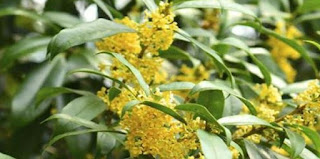Let go life: The fragrance of sweet-scented osmanthus in autumn is ten miles away. Do you all know how to plant it and what to pay attention to?

"Osmanthus falls in the middle of the moon, and the sky is fragrant and the clouds float out." I often imagine that sitting under the moonlight, the fragrance of sweet-scented osmanthus flowers bursts into my nostrils. As one of the famous flowers in my country, the leaves remain green in all seasons, and the flowers are fragrant when they bloom in autumn. Its flowers can also be made into delicacies, such as sweet-scented osmanthus, osmanthus tea, osmanthus cake, osmanthus sauce, osmanthus steamed bread and osmanthus oatmeal Wait. It is a very popular plant, and everyone should know that osmanthus is very suitable for garden cultivation. So, what are the ways and precautions for osmanthus cultivation? Osmanthus is an evergreen shrub or small tree in the Osmanthus family of Osmanthus fragrans. It is one of the top ten traditional Chinese flowers, plum, peony, chrysanthemum, orchid, rose, azalea, camellia, lotus, sweet-scented osmanthus and narcissus. Four taboos for cultiva...

